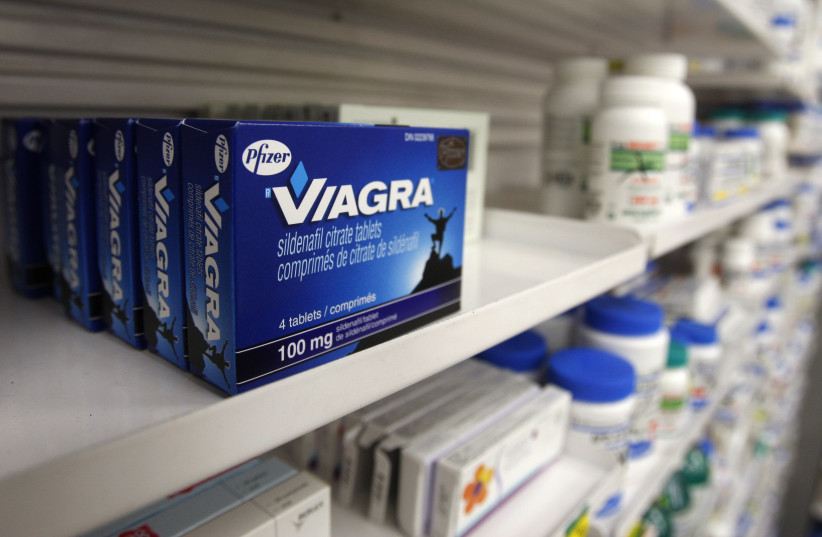Viagra, Levitra, Cialis, and other drugs for erectile dysfunction (ED) could pose an increased risk over time for men with cardiovascular disease (CVD) who take these pills with nitrate medication, according to a new Swedish study just published in the respected Journal of the American College of Cardiology.
Generically known as phosphodiesterase type 5 inhibitors (PDE5i), such ED drugs are taken by hundreds of millions of middle-aged and older men around the world who suffer from CVD. In fact, ED is a common condition in middle-aged and older men and is a strong predictor of coronary artery disease (CAD).
Nitrates are drugs commonly used to treat angina (chest pain). Both ED drugs and nitrates can cause drops in blood pressure, so they are contraindicated for use together – but there is little real-world data on the implications of using both, and the number of men who are prescribed both is growing.
Serving as an update to previous studies using the same Swedish national dataset from the Swedish Patient Register, this research analyzes the association between PDE5i treatment and cardiovascular outcomes in men with stable CAD who are being treated with nitrates. It aims to resolve the conflicting results regarding the impact of PDE5i treatment on cardiovascular morbidity and mortality.
“Physicians are seeing an increase of requests for ED drugs from men with cardiovascular diseases,” said Prof. Daniel Peter Andersson at the Karolinska Institute in Stockholm and senior author of the study, which was entitled “Erectile-Dysfunction Medications May Increase Risk of Death When Combined with Common Chest Pain Medication.”
In an accompanying editorial comment, Dr. Glenn Levine at Baylor College of Medicine and the Michael DeBakey Veterans’ Administration Medical Center – both in Houston – said in patients with ischemic heart disease and only mild angina with reasonable exercise ability, ED PDE5i is reasonably safe if the patient is not on chronic nitrate therapy. However, for those on chronic oral nitrate therapy, the use of PDE5i is ill-advised at best and generally contraindicated.
“ED and CAD are unfortunate – and all too common – bedfellows,” Levine said. “But, as with most relationships, assuming proper precautions and care, they can co-exist together for many years, perhaps even a lifetime.”
The process of the study
The study included 61,487 men with a history of myocardial infarction (MI) or percutaneous coronary intervention (PCI) who had received two nitrate prescriptions within six months. Exposure was defined as having received at least two filled prescriptions of any PDE5i medications.
Among these men, 55,777 men were treated with nitrates and 5,710 were treated with both nitrates and PDE5i. The median follow-up time for the entire cohort was 5.7 years in nitrate-only users and 3.4 years in nitrate users with PDE5i treatment. The nitrate plus PDE5i group was younger at 61.2 years compared to 70.3 years in the nitrate-only users.
The researchers estimated the hazard ratios with 95% confidence intervals (CI) for various health outcomes, including all-cause mortality, cardiovascular and non-cardiovascular mortality, MI, heart failure, cardiac revascularization, and major cardiovascular events (MACE).
The results of the study indicate that the combined use of PDE5i treatment with nitrates was linked with a higher risk for all health outcomes compared to those taking nitrates alone. In those taking both PDE5i and nitrates, few events occurred 28 days after dispensing the PDE5is, with lower incidence rates than in subjects taking nitrates, indicating that there is a low immediate risk for an event.
“Our goal is to underscore the need for careful patient-centered consideration before prescribing PDE5i medication to men receiving nitrate treatment,” Andersson said. “Furthermore, it justifies our efforts for continued research into the ambiguous effects of ED drugs on men with CVD.”
Limitations of the study include the inability to know a patient’s compliance and medication habits and the inability to infer causality of death from the data. Researchers assessed usage by filling prescriptions but did not know how compliant patients were or what their medication habits were.
Also, the patient population included high-risk individuals who already had experienced MI or revascularization.
They were also prescribed nitrates at least twice and, despite guideline recommendations, also prescribed PDE5i at least twice; thus, results may not be entirely generalizable to the general population. Further investigation is needed to fully understand the effects of the combination of treatments.
The authors advised that while Viagra and other PDE5i are safe and effective treatments for ED, men must discuss their underlying conditions and the use of medications before taking them.

